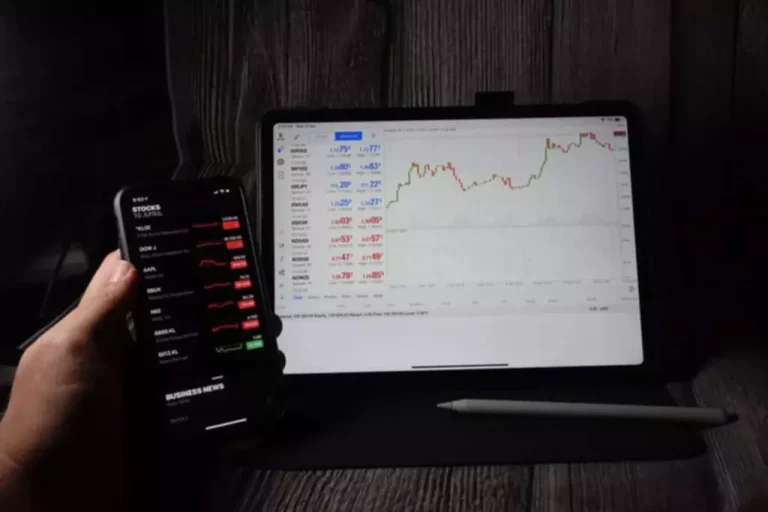You should not treat any opinion expressed in this material as a specific inducement to make any investment or follow any strategy, but only as an expression of opinion. This material does not consider your investment objectives, financial situation or needs and is not intended as recommendations appropriate for you. No representation or warranty is given as to the accuracy or completeness of the above information. IG accepts no responsibility for any use that may be made of these comments and for any consequences that result.

It differs from the triangle in the sense that both boundary lines either slope up or down. Price breaking out point creates another difference from the triangle. Falling and rising wedges are a small part of intermediate or major trend. As they are reserved for minor trends, they are not considered to be major patterns. Once that basic or primary trend resumes itself, the wedge pattern loses its effectiveness as a technical indicator.
Bull Flag Trading: A Comprehensive Guide on How to Spot and Trade the Bullish Chart Pattern With the Hulkster
Our watch lists and alert signals are great for your trading education and learning experience. To get confirmation of a bullish bias look for price to break the resistance trend line with a convincing breakout. Notice how the falling trend line connecting the highs is steeper than the trend line connecting the lows.

However, a descending triangle pattern can also be bullish, with a breakout in the opposite direction, and is known as a reversal pattern. The Falling Wedge is a bullish pattern that begins wide at the top and contracts as prices move lower. This price action forms a cone that slopes down as the reaction highs and reaction lows converge. In contrast to symmetrical triangles, which have no definitive slope and no bias, falling wedges definitely slope down and have a bullish bias. However, this bullish bias can only be realized once a resistance breakout occurs.
How To Hedge Against Tail Risk In The Stock Market (Tail Risk Hedging Strategies)
When the price breaks the upper trend line, the security is expected to reverse and trend higher. Traders identifying bullish reversal signals would want to look for trades that benefit from the security’s rise in price. An increase in volume upon breakout is considered to be a confirmation of the validity of the pattern and the strength of the move. It indicates that there is strong demand for the security and that traders are actively buying, pushing the price higher. When volume is high, it can be a sign of strong conviction among traders, which can lead to a sustained price move. Descending triangles are a bearish pattern that anticipates a downward trend breakout.

You can see that in this case the price action pulled back and closed at the wedge’s resistance, before eventually continuing higher on the next day. Price action is one of the best-known day trading strategies in the market. In previous articles, we have looked at some of the most popular price action trading strategies in the market. You simply wait for the two lines to reach its confluence point. When this happens, the asset will likely have a bullish breakout, as you can see in the chart below.
Is a Falling Wedge Pattern Bullish or Bearish?
New cheat sheet template on Reversal patterns and continuation patterns. I have also included must follow rules and how to use the BT Dashboard. From beginners to experts, all traders need to know a wide range of technical terms.

A strong increase in volume as the stock approaches the support level can indicate that buyers are becoming more aggressive and that a reversal is likely to occur. This increase in volume confirms the strength of the trend and increases the chances of success for the trade. A breakout refers to price movement above a resistance area or below a support area. Breakouts indicate the potential for the price to start trending in the breakout direction.
How to Trade Wedge Chart Patterns
The falling wedge is a bullish price pattern that forms in a positive trend, marking a short pause that’s expected to result in a breakout to the upside. Still, some traders choose https://www.xcritical.com/ to regard the pattern as a bearish sign. There indeed are many patterns in trading that are widely used by traders to get an idea of where prices are likely to head next.
- The falling wedge pattern occurs when the asset’s price is moving in an overall bullish trend before the price action corrects lower.
- This, once again, is why it’s really important that you always make sure to backtest the patters you’re going to trade, before putting real money on the line.
- Not sure if you’re ready to commit real capital to your pennant strategy?
- We know that you’ll walk away from a stronger, more confident, and street-wise trader.
- Our chat rooms will provide you with an opportunity to learn how to trade stocks, options, and futures.
While the most typical way of dealing with a breakout from a falling is to just follow it’s direction, some traders choose another approach. With the exact definition of the pattern covered, we’ll now look at what might be going on as the pattern forms. Yes, we work hard every day to teach day trading, swing trading, options futures, scalping, and all that fun trading stuff.
Falling Wedge Vs Triangle
This is recognized as a bearish pattern signaling a downward momentum. As soon as the price action tightens following higher highs and higher lows, the price may continue to break down past the support level established from the price’s recent swing. A falling wedge pattern consists of multiple candlesticks that form a big sloping wedge. It is a bearish candlestick pattern that turns bullish when price breaks out of wedge. Falling wedge patterns form by connecting at least two to three lower highs and two to three lower lows which become trend lines.
The falling wedge chart pattern is a recognisable price move that is formed when a market consolidates between two converging support and resistance lines. To form a descending wedge, the support and resistance lines have to both point in a downwards direction and the resistance line has to be steeper than the line of support. The falling wedge pattern is a continuation pattern formed when price bounces between two downward sloping, converging trendlines. It is considered a bullish chart formation but can indicate both reversal and continuation patterns – depending on where it appears in the trend. There are two main advantages of falling wedge pattern trading.
Descending Triangles vs. Ascending Triangles
Alternatively, you can use the general rule that support turns into resistance in a breakout, meaning the market may bounce off previous support levels on its way down. As a result, you can wait for a breakout to begin, then wait for it to return and bounce off the previous support area in the ascending wedge. This will enable you to ensure that the move is confirmed before opening your position.
An investor could potentially lose all or more of their initial investment. Only risk capital should be used for trading and only those with sufficient risk capital should consider trading. Testimonials appearing on this website may not be representative of other clients or customers and is not a guarantee of future performance or success. We introduce people to the world of trading currencies, both fiat and crypto, through our non-drowsy educational content and tools. We’re also a community of traders that support each other on our daily trading journey. With prices consolidating, we know that a big splash is coming, so we can expect a breakout to either the top or bottom.
How much does trading cost?
The sellers that have pushed its price down might then back off and take profit, while bulls sense the potential for a bounce back. Bearish pennants and bullish pennants can indicate that major price action is on the cards – so understanding them is crucial for any technical trader. Here’s an introduction to how pennants work, falling wedge pattern meaning and how to trade them. In this article, we’ll discuss what the falling wedge pattern is, how to identify it and use it on Redot. Another common signal of a wedge that’s close to breakout is falling volume as the market consolidates. A spike in volume after it breaks out is a good sign that a bigger move is on the cards.
